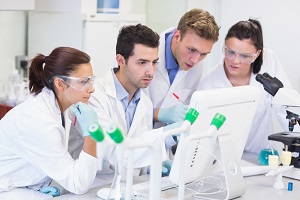An Alabama University team has identified biomarkers in cord blood that help predict some of the problems of premature babies. Along with prenatal screening, biomarkers could highlight the risks of death in the cradle and pulmonary abnormalities.
Bronchopulmonary dysplasia is a pulmonary anomaly that affects about 25% -50% of premature babies born. Many of these require prolonged oxygen therapy. Therapy saves them life, but interferes with the maturation of the still developing lungs. In fact, the alveoli conclude maturation during the last 14 weeks of gestation and the first 5 after childbirth. With oxygen therapy, maturation stops, which increases the risk of chronic lung disease.
The researchers examined cordonous bloodstream endothelial cells of 69 newborn babies born in the 26th week. Children weighed on average less than 1 kg. Of these 34 survived without bronchopulmonary dysplasia. Out of the remaining 35, 24 survived with dysplasia, while 11 died before developing it.
Venous endothelial cells have been cultured and tested for mitochondrial energy functions and oxidative generation. Mitochondria are cellular organelles that regulate cellular metabolism. Oxidative stress can damage them, causing the release of dangerous forms of oxygen-responsive species.
Neonatal cells with dysplasia or deaths had less oxygen consumption. They therefore produced more superoxide following the exposure of too much oxygen, releasing even more hydrogen peroxide. Superoxide and hydrogen peroxide are both types of oxygen-responsive species that have damaged mitochondrial DNA.
Damage to mitochondrial DNA has altered the functions of mitochondria. The alterations could therefore be used as a biomarker for the development of bronchopulmonary dysplasia. If you locate it in time, you will be able to change the therapeutic strategies.
Source: uab.edu



